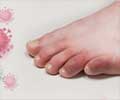A new study estimated the risk of Long COVID by socioeconomic deprivation and to further examine the inequality by sex and occupation.

Long-term complications of COVID-19
Go to source) and socioeconomic status across a range of occupation sectors.
Long COVID: Who's at Higher Risk of Symptoms?
The data were obtained from the Office for National Statistics COVID-19 Infection Survey, researchers found that females had a higher risk of long COVID, with the risk of long COVID in females in the least deprived areas comparable to that in males in the most deprived areas (3✔ ✔Trusted SourceSocioeconomic inequalities of Long COVID: a retrospective population-based cohort study in the United Kingdom
Go to source).
‘The chance of developing long COVID is 46% higher for people from the most deprived areas, compared to those in the least deprived areas.’





There was no significant association between the risk of long COVID and the most and least deprived areas for people working in the manufacturing and construction sectors. Although certain occupational groups, especially frontline and essential workers, have been unequally affected by the COVID-19 pandemic, studies on long COVID and occupation are sparse.These findings are consistent with pre-pandemic research on other health conditions, suggesting that workers with lower socioeconomic status have poorer health outcomes and higher premature mortality than those with higher socioeconomic position but a similar occupation. However, the socioeconomic inequality may vary considerably by occupation groups.
According to the researchers, the study indicates the need for a diverse range of public health interventions after recovery from COVID-19 across multiple intersecting social dimensions.
Future health policy recommendations should incorporate the multiple dimensions of inequality, such as sex, deprivation and occupation when considering the treatment and management of long COVID.
The inequalities shown in this study show that such an approach can provide more precise identification of risks and be relevant to other diseases and beyond the pandemic (2✔ ✔Trusted Source
Coronavirus (COVID-19) Infection Survey, characteristics of people testing positive for COVID-19, UK: 20 July 2022
Go to source).
Advertisement
References:
- Long-term complications of COVID-19 - (https:pubmed.ncbi.nlm.nih.gov/34817268/)
- Coronavirus (COVID-19) Infection Survey, characteristics of people testing positive for COVID-19, UK: 20 July 2022 - (https://www.ons.gov.uk/peoplepopulationandcommunity/healthandsocialcare/conditionsanddiseases/bulletins/coronaviruscovid19infectionsurveycharacteristicsofpeopletestingpositiveforcovid19uk/20july2022)
- Socioeconomic inequalities of Long COVID: a retrospective population-based cohort study in the United Kingdom - (https://journals.sagepub.com/doi/10.1177/01410768231168377)














